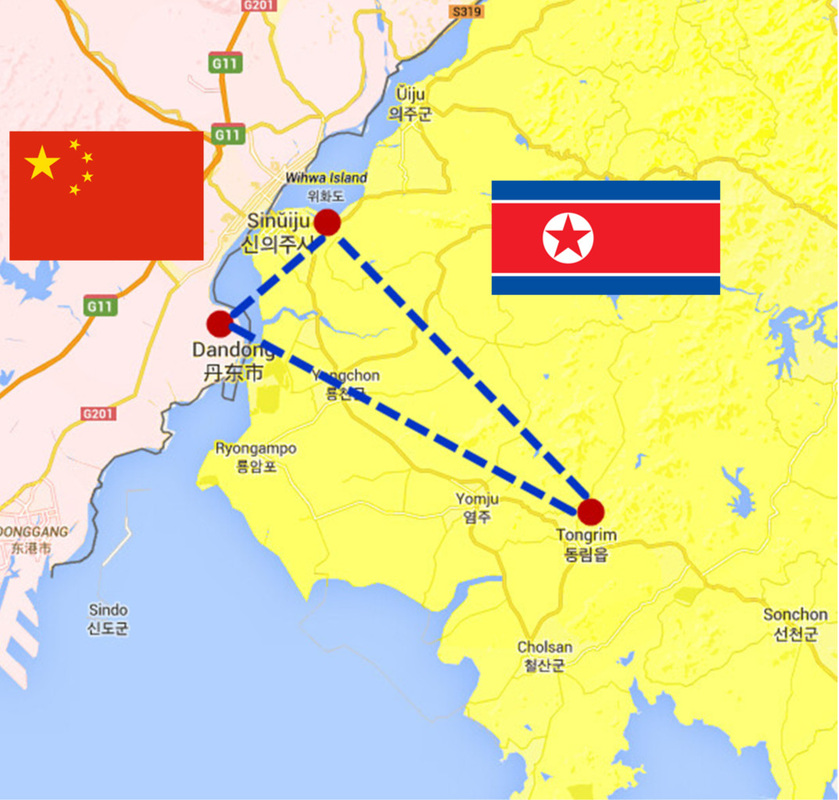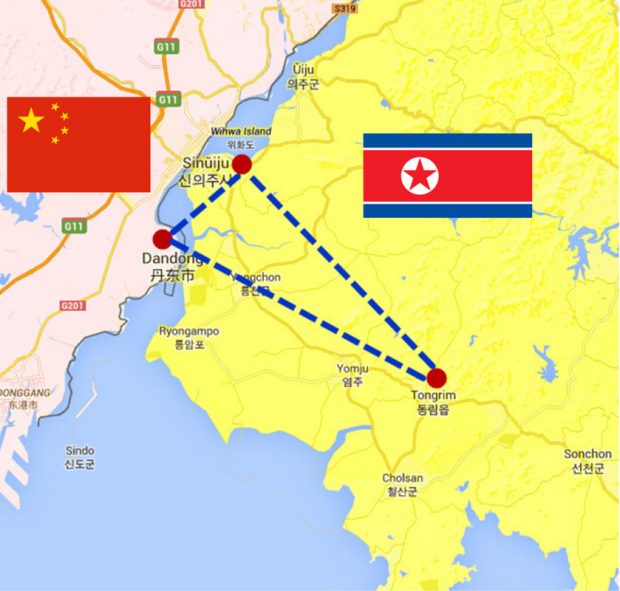
Bridge to nowhere?

The New Yalu Bridge separates the twin cities of Sinuiju and Dandong, lying opposite each other on the Chinese and North Korean sides of the Yalu River respectively.
The very existence of the bridge, however, is nowhere to be found in local Chinese media. State censors do not want a reminder of what is gradually becoming a chronic embarrassment; a living (and very expensive) symbol of the uneasy nature of Sino-North Korean relations.
Over the many decades since the Korean War, commercial traffic between Sinuiju and Dandong has been serviced by a 1943 bridge originating in downtown Dandong. The narrow passageway is used by both trucks and trains. Decades of heavy use and poor maintenance have made the one-time marvel of engineering dilapidated and unreliable. The New Yalu Bridge still accounts for about two thirds of all land traffic between North Korea and the outside world.
Thus, it seemed only logical when in 2009 during a visit of then-Chinese Prime Minister Wen Jiabao to Pyongyang, North Korea and China agreed to build a second bridge, built with the very best materials and twenty-first century engineering, that would accommodate automotive and commercial traffic, while the old 1943 bridge would be rail only.
The project was expected to cost $150 million, the lion’s share to be paid by the Chinese. The new bridge is located downstream from the city center but still within city limits, and is perfectly accessible from Dandong proper.
Construction of the new bridge brought much business activity to Dandong. A new commercial district began to grow nearby on the assumption that the area would become a major trade and investment hub. Some optimists even went as far to say the city was well on its way to being a “Macao of the North”. Property investors invested piles of money constructing high-rise buildings where offices and flats of lucky businessmen and women were to be located.
With characteristic swiftness the Chinese nearly completed the bridge by 2014, less than five years after construction began. Its formal opening was highly anticipated, but as time went by no news about the bridge appeared in official publications in either country. Something was up.
Indeed, even though the bridge was more or less complete, it went nowhere. While the Chinese side had a large customs and freight processing complex built, connected with a system of roads leading to the bridge, on the North Korean bank the bridge ends abruptly, virtually in the middle of a field, with no signs of customs, immigration and other buildings in sight. There are no paved roads to the supposed North Korean terminal for the bridge.
Soon it was clear that the North Koreans, due to some unknown reasons, had decided not to complete their part of the project, even though their expected contribution was relatively tiny. There was complete silence on the matter in the media, but rumors claimed that the entire bridge project was initially the brainchild of Jang Song-taek, the uncle of the North Korean Supreme Leader. Jang was very publicly purged and executed in December 2013, and many projects he was associated with were shelved or delayed indefinitely.
There are other explanations too. A high-level Chinese analyst conveyed that his North Korean interlocutors claimed they were suspicious of China’s true intentions. Accordingly,, the new bridge was too large for civilian traffic, and thus was probably designed to facilitate a Chinese invasion of North Korea (decision makers in Pyongyang, ever suspicious of their neighbors, believe that such invasion is not completely impossible). The above-mentioned analyst was told that the bridge “can be used by hundreds of tanks every hour”.
Regardless of the true motivations behind North Korean dereliction, the city of Dandong was the biggest loser. Speculative investments in the bridge district did not pay off; most of the flats and nearly all offices remain empty, with little chance of being sold at an acceptable price.
Rumors surface from time to time about a North Korean change of heart, that construction will start on a customs office and on paved roads. The last time such rumors circulated, early this year, it was believed that work would resume in July. However, nothing happened. The massive nearly-complete bridge towers rise over the city for a fourth year, a vivid reminder of the risks of doing business with North Korea.


